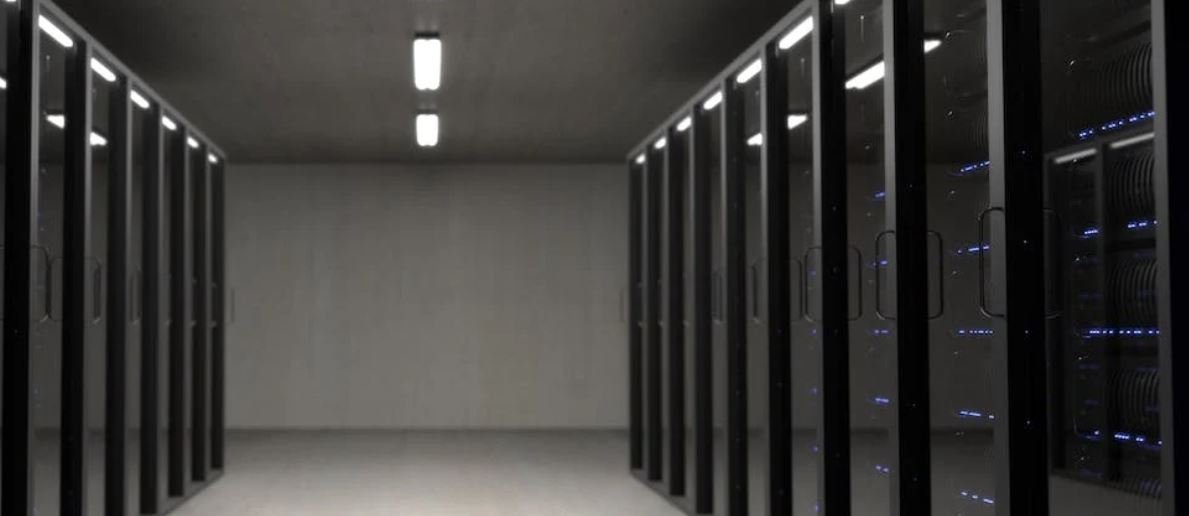Video Card
Video cards, also known as graphics cards or GPUs (Graphics Processing Units), are essential components in modern computers. They are responsible for rendering images, videos, and games on the display device.
Key Takeaways:
- Video cards, also called GPUs, are vital for rendering images and videos.
- They are essential for a smooth gaming experience and can greatly impact graphics quality.
- Factors to consider when choosing a video card include performance, memory, and connectivity.
The Importance of Video Cards
Video cards play a crucial role in the overall performance and visual output of a computer. They have their specialized processors, memory, and dedicated video outputs, which enable them to handle complex calculations and render high-quality graphics at high speeds. Without a powerful video card, the computer may struggle to display high-resolution images, videos, and games. *They are a critical component for gamers and professionals who require accurate and smooth visuals.*
Factors to Consider When Choosing a Video Card
*When selecting a video card, several key factors need to be considered to ensure optimal performance and compatibility.* Here are some important aspects to keep in mind:
- Performance: The performance of a video card is determined by its processing power and clock speed. Higher performance levels result in smoother graphics and faster rendering times.
- Memory: Video cards typically have their own dedicated memory called VRAM (Video Random Access Memory). More VRAM allows the card to handle larger and more detailed textures, resulting in better image quality.
- Connectivity: Consider the video outputs available on the card, such as HDMI, DisplayPort, or DVI. Ensure the card supports the necessary connections for your display devices.
- Compatibility: Verify that the video card is compatible with your computer’s motherboard and power supply. Check for physical dimensions and power requirements to avoid any compatibility issues.
Types of Video Cards
| Card Type | Key Features |
|---|---|
| Integrated |
|
| Dedicated |
|
Video Card Comparison
*Comparing different video cards can assist in identifying the one that suits your needs best.* Here are three popular options:
| Video Card | Memory | Performance |
|---|---|---|
| NVIDIA GeForce RTX 3080 | 10 GB GDDR6X | Excellent |
| AMD Radeon RX 6800 XT | 16 GB GDDR6 | Outstanding |
| NVIDIA GeForce GTX 1660 Super | 6 GB GDDR6 | Good |
Conclusion
Video cards are an integral part of any modern computer system, with their ability to render high-quality graphics quickly and accurately. When selecting a video card, consider performance, memory, connectivity, and compatibility to ensure it meets your specific requirements. Remember, a powerful video card can significantly enhance the visual experience and performance of your computer.

Common Misconceptions about Video Cards
Graphics performance is solely determined by the video card
One common misconception is that the graphics performance of a computer is solely determined by the video card. While the video card plays a significant role in determining graphics performance, it is not the only factor. Other components such as the CPU, RAM, and software optimizations also impact graphics performance.
- The performance of the video card can be limited by other components in the system.
- Software optimizations, such as drivers and game settings, can significantly affect graphics performance.
- Upgrading the video card may not always result in a significant improvement in graphics performance if other components are outdated.
More VRAM means better performance
Another misconception is that having more Video RAM (VRAM) will automatically result in better graphics performance. While VRAM is important for storing and accessing graphics data, it is not the only factor that determines performance.
- The type and architecture of the VRAM, such as DDR3 or GDDR5, also play a role in performance.
- A higher VRAM capacity may be beneficial for running games or applications with high-resolution textures and complex scenes.
- The overall performance of the video card, including its GPU, memory bandwidth, and processing power, should be considered along with VRAM capacity.
Overclocking the video card guarantees better performance
Some people believe that overclocking their video card will automatically guarantee better performance. While overclocking can provide performance gains, it is not a guaranteed solution and comes with certain risks and limitations.
- Overclocking can cause stability issues, increased power consumption, and may void warranty.
- Not all video cards are designed for overclocking, and some may not have sufficient cooling or power delivery to handle higher clock speeds.
- The performance gains from overclocking vary depending on the specific video card model and the game or application being used.
Video cards are only for gamers
Many people mistakenly believe that video cards are only beneficial for gamers. While it is true that video cards are important for gaming, they also play a significant role in other areas, such as graphic design, video editing, and 3D modeling.
- Video cards enhance the performance and rendering capabilities of various professional software applications.
- Graphics-intensive tasks, such as video encoding and rendering, can benefit from the processing power and parallel computing capabilities of video cards.
- Using a powerful video card in non-gaming applications can significantly decrease rendering and processing times.
Integrated graphics are inferior to dedicated video cards
There is a common misconception that integrated graphics found in CPUs or motherboards are always inferior to dedicated video cards. While integrated graphics may not provide the same level of performance as high-end dedicated video cards, they have improved significantly over the years.
- Modern integrated graphics can handle light gaming, HD video playback, and general computing tasks without the need for a dedicated video card.
- Integrated graphics are more power-efficient, produce less heat, and often come at a lower cost compared to dedicated video cards.
- For users who don’t require high-performance graphics, integrated graphics can provide a satisfactory experience without the need for an additional video card.

The Evolution of Video Card Technology
Since the early days of computing, video cards have played a crucial role in rendering graphics, enabling the smooth and immersive experience we have come to expect from our computers. Over the years, video card technology has advanced by leaps and bounds, allowing for realistic gameplay, stunning visuals, and efficient multitasking. Let’s explore the various facets of video card development and the milestones achieved along the way.
1. Pioneering Video Card: IBM Monochrome Display Adapter (MDA)
This groundbreaking video card was released in 1981, offering a resolution of 720×350 pixels and a monochrome display. The MDA was a game-changer, laying the foundation for future video card developments.
2. The Iconic: NVIDIA GeForce GTX 1080 Ti
| Specification | Details |
|---|---|
| CUDA Cores | 3584 |
| Base Clock | 1480 MHz |
| Boost Clock | 1582 MHz |
| Memory Size | 11 GB |
| Memory Type | GDDR5X |
| Memory Bandwidth | 484 GB/s |
The NVIDIA GeForce GTX 1080 Ti is an absolute powerhouse, with an impressive 3584 CUDA Cores and 11 GB of GDDR5X memory. It brings gaming and rendering to new heights, offering unparalleled performance, detailed graphics, and realistic VR experiences.
3. The Revolutionary: AMD Radeon RX 6000 Series
| Model | CUDA Cores | Memory Size | Memory Type |
|---|---|---|---|
| RX 6800 | 3840 | 16 GB | GDDR6 |
| RX 6800 XT | 4608 | 16 GB | GDDR6 |
| RX 6900 XT | 5120 | 16 GB | GDDR6 |
The AMD Radeon RX 6000 Series revolutionizes high-performance gaming, delivering extraordinary visual fidelity and immersive experiences. With up to 5120 CUDU Cores and 16 GB of GDDR6 memory, these cards are poised to challenge the status quo.
4. Affordable Powerhouse: NVIDIA GeForce RTX 3060
| Specification | Details |
|---|---|
| CUDA Cores | 3584 |
| Base Clock | 1320 MHz |
| Boost Clock | 1777 MHz |
| Memory Size | 12 GB |
| Memory Type | GDDR6 |
| Memory Bandwidth | 360 GB/s |
The NVIDIA GeForce RTX 3060 packs a punch without breaking the bank, offering 3584 CUDA Cores, 12 GB of GDDR6 memory, and impressive clock speeds. It strikes a perfect balance between affordability and performance, making it an ideal choice for gamers on a budget.
5. Cutting-edge Innovation: Ray Tracing Technology
Ray tracing technology, introduced in recent video card generations, represents a significant leap forward in graphics rendering. By simulating the behavior of light and how it interacts with various materials, it produces incredibly realistic lighting effects and reflections, enhancing the overall visual experience.
6. Memory Bandwidth Marvel: AMD Radeon RX 6900 XT
| Specification | Details |
|---|---|
| CUDA Cores | 5120 |
| Base Clock | 1825 MHz |
| Boost Clock | 2250 MHz |
| Memory Size | 16 GB |
| Memory Type | GDDR6 |
| Memory Bandwidth | 512 GB/s |
The AMD Radeon RX 6900 XT features an impressive 5120 CUDA Cores and 16 GB of GDDR6 memory, but it truly shines with its remarkable memory bandwidth of 512 GB/s. This allows for snappy performance and seamless gaming experiences even at high resolutions.
7. The Game Changer: NVIDIA DLSS
NVIDIA’s Deep Learning Super Sampling (DLSS) technology is a game-changer, utilizing artificial intelligence and machine learning algorithms to upscale lower-resolution images in real-time. This not only enhances performance but also delivers visually stunning games with crisp, detailed graphics.
8. Entry-Level Enthusiast: AMD Radeon RX 5500 XT
| Specification | Details |
|---|---|
| CUDA Cores | 1408 |
| Base Clock | 1717 MHz |
| Boost Clock | 1845 MHz |
| Memory Size | 8 GB |
| Memory Type | GDDR6 |
| Memory Bandwidth | 224 GB/s |
The AMD Radeon RX 5500 XT offers an affordable entry point for gaming enthusiasts, boasting 1408 CUDA Cores and 8 GB of GDDR6 memory. With decent clock speeds and ample memory, it strikes a balance between performance and affordability.
9. Gaming-Powerhouse: NVIDIA GeForce RTX 3090
| Specification | Details |
|---|---|
| CUDA Cores | 10496 |
| Base Clock | 1400 MHz |
| Boost Clock | 1700 MHz |
| Memory Size | 24 GB |
| Memory Type | GDDR6X |
| Memory Bandwidth | 936 GB/s |
The NVIDIA GeForce RTX 3090 sets a new benchmark for gaming powerhouses, combining 10496 CUDA Cores, 24 GB of lightning-fast GDDR6X memory, and a staggering memory bandwidth of 936 GB/s. This graphical behemoth can handle any game and rendering task with ease.
10. The Future Beckons
The world of video card technology continues to push boundaries, promising even more breathtaking visuals and immersive experiences. With advancements in ray tracing, artificial intelligence, and memory technology, the future holds exciting prospects for video card enthusiasts and gamers alike. As technology evolves, video cards will remain instrumental in propelling the gaming and visual experience to unprecedented heights.
Conclusion
Video card technology has come a long way since its humble beginnings, revolutionizing the way we view and interact with digital content. From pioneering monochrome displays to cutting-edge graphics rendering, the evolution of video cards has driven the exponential growth of the gaming industry and multimedia experiences. As we look to the future, the pursuit of more realistic graphics, higher performance, and innovative technologies promises a thrilling evolution of video card technology, sparking excitement among gamers and tech enthusiasts worldwide.
Video Card – Frequently Asked Questions
What is a video card?
A video card, also known as a graphics card or display adapter, is a hardware component that generates and outputs images to a display device, such as a monitor or television. It is responsible for rendering images, videos, and animations, enhancing gaming performance, and supporting visual effects in various software applications.
How does a video card work?
A video card contains a processor called the graphics processing unit (GPU) that performs complex calculations to create and manipulate images. It has its own dedicated memory (VRAM) to store image data and instructions. The GPU works in conjunction with the computer’s CPU to process graphical data and send it to the display device through a video output port, such as HDMI, DisplayPort, or DVI.
What are the key factors to consider when choosing a video card?
When selecting a video card, important factors to consider include the GPU’s performance and capabilities, the amount and type of VRAM, compatibility with the computer’s motherboard and power supply, the outputs available, cooling system design, overall power consumption, and the intended usage, such as gaming, video editing, or graphic design.
What is VRAM and why is it important?
VRAM (video random access memory) is a type of memory specifically designed for video rendering and processing tasks. It stores the image data, textures, shaders, and other graphics-related information needed by the GPU. The amount of VRAM affects the video card’s ability to handle high-resolution textures and complex graphical effects. Insufficient VRAM can lead to frame rate drops and lower overall performance.
Can a video card be upgraded?
Yes, video cards can be upgraded in most desktop computers. However, the upgradability depends on the computer’s motherboard and power supply compatibility. It is important to verify the availability of compatible slots (e.g., PCI Express x16) and the power requirements of the new video card to ensure seamless installation and optimal performance.
What are the common video card interfaces?
The most common video card interfaces are HDMI, DisplayPort, and DVI. HDMI is widely used for connecting video cards to TVs and monitors. DisplayPort supports higher resolutions and is commonly found on professional monitors and gaming setups. DVI is an older interface but is still prevalent on many monitors and graphics cards. Some video cards may also have VGA (Video Graphics Array) ports, although they are less common nowadays.
Do video cards have compatibility requirements with operating systems?
In general, modern video cards are compatible with multiple operating systems, including Windows, macOS, and Linux. However, it is essential to check the specific requirements and drivers provided by the video card manufacturer. Some advanced features and optimizations may require specific software or driver support.
How can I ensure my video card operates at optimal temperature?
To maintain optimal temperature and prevent overheating, it is recommended to ensure proper cooling inside the computer case. This can be achieved by having efficient case fans, adequate airflow, and potentially installing an aftermarket CPU or GPU cooler. Cleaning the video card and removing any dust or debris from its heatsink and fans can also help in maintaining cooler temperatures.
Can a video card improve gaming performance?
Yes, a video card has a significant impact on gaming performance. A more powerful and capable video card can render games at higher resolutions, produce smoother frame rates, and enable advanced graphical effects. However, it is important to consider the overall configuration of the computer, including the CPU and RAM, as they also contribute to gaming performance.
What is overclocking a video card?
Overclocking a video card involves increasing the GPU and VRAM clock speeds beyond their default values to gain additional performance. This process can be done using software provided by the video card manufacturer or third-party utilities. However, it may lead to increased power consumption, heat generation, and potentially reduce the video card’s lifespan if not done properly. Overclocking should be done cautiously and with adequate knowledge of the risks involved.




